What is Ecology and why is it important?
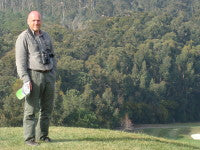
I don't think anyone would disagree when I say that there has never been a more important time to focus on ecology and to minimise the carbon footprint we leave for our children to inherit. Far too much valuable land, which has provided natural habitats for native British flora and fauna since time immemorial, has been lost to us. The result is a comprehensive list of various flowers, plants, animals, birds, insects and other species whose numbers are in a steep decline.
I feel very lucky to operate within the golf industry, and one of the reasons why is that British golf courses have a vital role to play in preserving Britain's wildlife heritage. I am devoted to the cause of providing a well-manicured golf course that is placed within a natural environment that teems with a rich diversity of plants and animals, an ecological haven, which can not only provide so much pleasure for the nation's golfers, but can also positively inspire them.

That is despite hearing about ecology in so many walks of life. We hear about eco-warriors attempting to prevent certain developments, eco-cars with their super low carbon emissions, and a whole host of domestic and professional brands brandishing the eco flag these days, with a plethora of products now at our disposal in our supermarkets that display the 'Eco' prefix.
So, within this article, I want to try and answer the question, "What is Ecology and why is it important on the golf course?" and demonstrate that the greenkeeping industry is steeped in ecology, starting on the greens and finishing well beyond the borders of the course. Knowledge is power; so they say, and it goes a long way when trying to communicate to the club's directors and members that ecological management, and therefore a sustainable golf club facility, is the way forward.
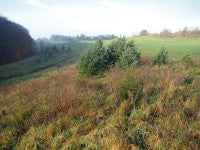
The physical environment - comprising such things as temperature, water availability, nutrient availability, soil acidity (all can be said to be important ecological factors considered by greenkeepers).
The biotic environment - comprising any influences on a species that are exerted by other species and includes competition, predation and parasitism.
These biotic ecological factors are also well demonstrated on the golf course and can best be demonstrated by taking a familiar species known to all UK greenkeepers, Common Bent, Agrostis capillaries, one of the preferred grass species within the sward of many greens and roughs due to its thin and wispy stem, allowing for truer greens and facilitating easier ball retrieval from the rough. A full ecological appraisal of Common Bent that follows allows for its successful management and maintenance on the golf course, and the important factors will be well known to greenkeepers, demonstrating that there is a little ecologist in us all.
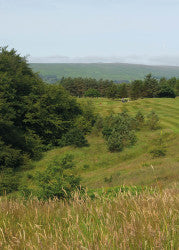
This description, as well as giving us a picture of the structure of the plant, gives us all the answers to the plant's physical requirements with temperature, water, nutrient, soil acidity all mentioned (all ecological interrelationships). It also gives us an interpretation of the plant's 'niche', a fundamental concept within ecology.
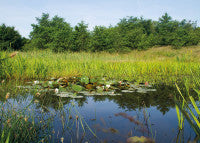
Consider competition; another fundamental ecological principle. Two types of competition occur where Common Bent will compete for a resource it requires, whether that is water, light, nutrients or space.
1. Intraspecific Competition is where members of the same species compete for a limited resource. This is where Common Bent would be the only species present, on the greens for example and, providing you give the plant its desired ecological requirements, would provide an excellent playing surface. The structure of the plant (thin stem) allows the plant to compete for space much more efficiently than more vigorous, thick grass species and allows for a dense sward where plants are able to grow very close together.
2. Interspecific Competition is where members of different species compete for the same limited resource. Here, for example, the same Common Bent on your greens would be competing against another species of grass, such as invasive Yorkshire-fog, Holcus lanatus, a vigorous, thick stemmed species and something we don't want near our greens. This mixed species sward would result in a less than true playing surface due to the differences in structure of the plants and would be the result of ecological factors impacting upon the green in question. For example, lower light levels and increased nutrient levels would allow the Yorkshire-fog to outcompete the Common Bent, demonstrating the importance of knowing species ecology on the golf course.
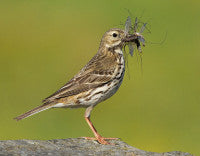
We all know of this infamous invertebrate and how to manage its effects, however, it demonstrates an ecological relationship that impacts upon the quality of the turf. The interrelationships don't stop there as the predatory root eater is, in turn, preyed upon by a host of other species.
There are other biotic factors that impact upon management of your Common Bent sward that represent more ecological relationships we know about. One such example, and again another major concept within ecology, is parasitism, and especially parasitism by fungal blooms such as fusarium. Every greenkeeper knows everything there is to know about this species, its preferred temperature and moisture requirements, its life cycle and the damage it can cause to fine turf. This is also another example of how ecology is central to a greenkeeper's understanding of how to best manage his course.
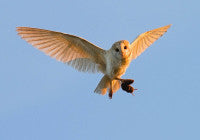
So, hopefully, it is a little more clear what ecology is and how important it is for all greenkeepers, even if you don't think you are ecologically aware.
The following is further to my thinking that today's golf industry is unique in its ability to significantly contribute to biodiversity, due to the nature of golf course design - golf holes amidst natural surroundings.
Golf courses in the UK are, on average, 50 to 60 hectares in size, which represents quite a substantial proportion of our countryside and, with over 2,500 clubs here in the UK, it can be estimated that they represent a total of 0.6% of the total land area (Dair and Schofield, 1990). This equates to more than the total area covered by RSPB reserves, country parks and local nature reserves (Gange et al, 2003). The United Nations and the European Union have identified conservation of biodiversity as an essential element of sustainable development.
It is thought that golf clubs should have a moral obligation to manage their land in accordance with sound management practice and preserve our natural heritage to the best of their ability. Environmental stewardship, through sound ecological management practice, is one of the key elements that contribute towards the sustainability of a golf facility. This, in some small way, may help preserve biodiversity and reverse the trend of our declining priority habitats and species that live within them. It is also thought that a golf course needs to reflect the immediate surrounding environment to allow maximum biodiversity movement within the locality, which will further improve ecology and aesthetics on the course.
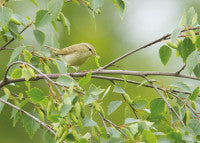
It all started on the morning of the 13th June, 7.30am to be precise, when I was cutting the greens and I removed my ear defenders only to hear a bird song that I didn't readily identify. After a brief search for the bird, I found I was looking at a Greenish Warbler. Yes, ironically, that is its name, which represented the second ever record for the northwest of England and the first for twenty years!
It was meant to be thousands of miles away, somewhere in the forests of Eastern Europe to Siberia, and had come way off course on its northward migration from India. The news was released to the birdwatching fraternity and turned into quite an event for us as a steady stream of twitchers visited over the course of its stay until the morning of the 19th, a week later; one birdwatcher even visiting from as far afield as Antwerp.
Marshalling of the course was necessary during competitions to allow people to view the bird and the whole thing went by without incident.
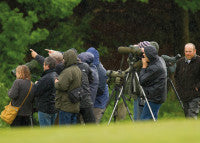
Ending on a ecological note though, I thought I would mention that the Greenish Warbler in question was singing from the top of the canopy of mature beech trees that were growing in a small ravine with a healthy population of young trees along the woodland edge; it just so happens that this represents the perfect ecological niche for this species.
All photos kindly provided by John R Barlow. Visit www.jrbarlow.co.uk to view a selection of other fine images.
Conservation Matters - a case study
Wildflower Show
The work involved in this case study was performed during the period autumn 2010 through to summer 2011 at Turton Golf Club. The course is primarily a moorland/heathland course situated on the southern slopes of Turton Heights in Bolton and offers fantastic panoramic views of the town below and surrounding hills.
T 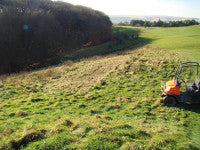
Grasslands such as this are a priority habitat in the UK and are largely confined to small isolated sites. All areas of this type of habitat are of regional importance for biodiversity and they are a UK priority for conservation.
As well as being important for the flowers themselves, these grasslands also support a wide variety of insects, birds and small mammals, and are especially important to bees and butterflies as it contains many of the plant species that they depend upon.

The grassland at Turton appears to be of particularly significant value for invertebrates due to its sheltered, south facing aspect and supports a wide variety of herbs and grasses, including a number which indicate grassland of an ancient origin such as Pignut Conopodium majus, Common Knapweed Centaurea nigra, Bitter-vetch Lathyrus linifolius, Quaking-grass Briza media, Meadow Vetchling Lathyrus pratensis, Pale Sedge Carex pallescens, Bugle Ajuga reptans, Spring Sedge Carex caryophyllea, Glaucous Sedge Carex flacca and Carnation Sedge, Carex panicea. Bracken, bluebell, heather and bilberry were also present.
Himalayan Balsam, an invasive weed, also inhabited the ditchline, which runs through the middle of the grassland. Some hawthorne and young tree saplings were present (mainly on the edges/less herb rich areas) and a number of Scots pine, Pinus sylvestris, have been planted at the top of the slope, unfortunately on areas of herb rich grassland and represent a threat to this important habitat, as eventually they would shade-out the wildflower community once matured.
This area of grassland is quite thatchy, dense and 'mattressy', and does not appear to have received any management (cutting) for a number of years. In order to retain the ecological value, some management of the sward is required. The ideal management for this area of grassland would be grazing, which is not likely to be feasible.
As grazing is impractical and management is judged necessary, a very effective means of maintaining species richness is to cut the grassland. As well as the value for flora, the grassland also appears to be of good value to invertebrates, and cutting the whole site in one year could, therefore, be catastrophic for invertebrate populations.
Management Initiative
The following initiative began during October 2010 to enhance and maintain the grasslands value to wildlife and to prevent it from scrubbing over/reverting to woodland.
In order to maintain structural diversity (for invertebrates) and species richness, the greenstaff strimmed about one third of the grassland in a weaving fashion. This is to be repeated every three years so as to leave a small scale mosaic of cut and uncut patches; by adopting a different random pattern the next time, some areas will be cut more often than others.
Given the slope and size of the area, cutting with a hand-held brushcutter was the most suitable method. The cut took place in late September/early October 2010 (for invertebrates the cut should ideally take place after the first frost) and cuttings were hand raked and removed from the site within a few days, as leaving them increases nutrient availability and encourages the development of a closed sward.
Most tree saplings and scrub were removed, including all planted Scots pine. The pines have, unfortunately, been planted on areas of significant interest at the top of the slope and will eventually shade out ground flora.
